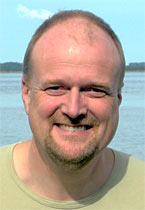
If you’re reading this right now, chances are, you’ve just taken a breath. Oxygen is one of those essential elements that allows us humans to live.
Ole Hertel, an air pollution specialist and professor at Aarhus University, focuses his research on air quality.
Ole Hertel is professor at Aarhus University, Denmark. He is a specialist in air pollution modelling. He has more than twenty-five years of experience in developing and using mathematical models to describe air pollution, as well as to interpret measuring and calculation data. His focus has been on describing two conditions: 1) the contribution of air pollution to the eutrophication of nature both on land and at sea via ammonia and nitrogen oxides and 2) human exposure to air pollution that can be hazardous to health.
More Diseases from Air Pollution Uncovered by Improved Data Material
At rest, we breathe approx. 12-15 times per minute. Depending on the activity level, this makes up a daily quantity in the order of twenty cubic metres of air that can make us ill depending on how polluted the air is.
Asthma attacks, wheezing, cardiovascular diseases, lung cancer and even diabetes are some of the more glaring examples of diseases we can get from polluted air. The list of injuries due to air pollution in Denmark is long, but it does not mean that we have the world’s most polluted air.
This is to be found in the megacities of Asia, Africa and South America. But even in a “moderately polluted” air as we find it in Western World towns and cities, we find many serious injuries which come from the air that we breathe every day.
Danish researchers represent some of the very best to demonstrate illnesses caused by air pollution on human health. Why is that?
First of all we have some very unique health registers in Denmark and that is quite different from other countries. But not only do we have some of the world’s finest health registers in Denmark, we also have some outstanding good pieces of information on traffic, buildings and infrastructure.
This information we have concluded in a model which uses digital road maps and building and road registers to determine the parameters we need for air quality calculations on address level. Therefore, we can come up with conclusions that are more precise than in other countries.


Comments
One response to “Ole Hertel, Aarhus University – Air Pollution Modeling”
Of course no serious study on air pollution in Denmark can avoid the observation that far too many Danes smoke like chimneys and reap the consequences in terms of poor health.